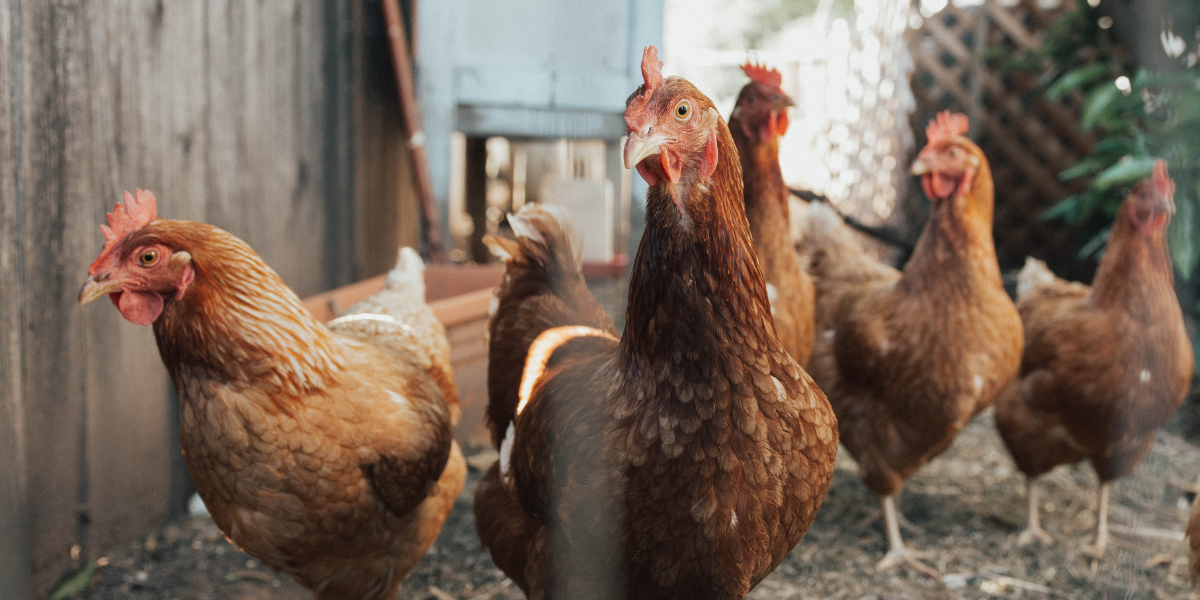What indicators should be monitored to achieve higher productivity on the farm?

Did you know that South and Southeast Asia will be the epicenter of growth in the global poultry market over the next decade? According to a recent Rabobank report, these markets are expected to grow an impressive 30% by 2030, driven by stronger economies, expanding populations, and increasing demand for poultry as the preferred protein source. This sharp growth highlights the importance of monitoring productivity indicators on farms, especially considering that animal welfare is a crucial factor in ensuring not only the health of animals but also the profitability of producers.
With proper management and nutrition practices, it is possible to maximize productivity and take advantage of the potential of this growing market.
Both scientific research and field practices demonstrate that animals receiving nutrition tailored to their production stage, living in spacious housing conditions with good ambiance, and being handled positively to respect their natural needs are more productive.
Animals raised in environments that expose them to chronic stress tend to suffer from immunosuppression, leading to higher veterinary and medication costs due to increased sanitary challenges and mortality rates.
Under these conditions, certain species, such as pigs, gain weight more slowly, while laying hens experience lower-than-expected egg production rates.
In this article, learn about the main indicators that should be monitored to achieve higher productivity on farms.
The impact of animal welfare on productivity indicators
Ensuring the comfort and quality of life of farm animals can lead to significant gains for producers. Providing means for animals to exhibit natural behaviors impacts not only operations and animal health but also overall farm productivity.
Studies with poultry and swine farmers confirm that conscious management practices, both in daily routines and in animal transport operations, can enhance profitability and reproductive efficiency.
Some indicators can help understand how animal management routines influence production and how farmers can adapt diets, management, facilities, and farming environments to maintain performance while respecting the species’ natural needs.
Indicators in swine farming
The swine production chain is one of the most delicate, and careful, calm handling is one of the key productivity indicators in swine farms.
Critical indicators include:
- Cleaning protocols, health care, and treatment for sick or injured animals.
- Avoiding cages and using appropriate density in pens to minimize stress from overcrowding and competition for resources like water, food, and resting space.
- Establishing standard protocols for swine euthanasia and contingency plans for emergencies, such as fire, drought, or flooding.
Read more: Swine welfare: What is the ideal environment to prevent animal stress?
Indicators in poultry farming
Cage-free hens, when well-managed and cared for under Certified Humane standards, exhibit above-average laying rates for their breed. This reflects the positive environment provided, such as access to nests, perches, and dust-bathing substrates.
Key factors include:
- Housing that meets maximum density guidelines for the chosen system (e.g., bedding-covered floors, slat floors, or aviaries).
- External areas for free-range systems, ensuring maintained pastures and appropriate conditions.
- Housing and equipment must be clean and well-maintained to prevent disease and accidents.
Proper ventilation, temperature control, and lighting levels are fundamental for allowing hens to express natural behaviors.
Read also: Management of laying hens: Best practices and recommendations.
Key productivity indicators
For both poultry and swine farming, adherence to the Five Freedoms of Animal Welfare, established by the Farm Animal Welfare Council in 1979, is fundamental to allowing natural behavior and preventing stress that can irreversibly impact productivity, meat quality, and egg production.
The Five Freedoms are:
- Physiological freedom: Access to adequate food and water for health and vitality.
- Health freedom: Prevention, prompt diagnosis, and treatment of health issues.
- Behavioral freedom: Freedom to express natural behavior through sufficient space, proper facilities, and companionship of their species.
- Environmental freedom: Suitable shelter and resting conditions tailored to each species.
- Psychological freedom: Freedom from mental suffering, including fear or stress.
Specific indicators
Ammonia Levels:
- Poultry: Ensure proper ventilation to reduce air humidity and maintain dry bedding. Ammonia concentration should not exceed 10 ppm, with immediate action required if it reaches 25 ppm.
- Swine: Maintain ammonia levels below 10 ppm through effective ventilation.
Temperature Range:
- Poultry: Maintain an optimal temperature of 18-24 °C to prevent thermal stress.
- Swine: Maintain temperatures suitable for each production stage. For reproduction, 18-25 °C; for piglets, 23-30 °C.
Mortality and Euthanasia:
- Poultry: Cervical dislocation is permissible in emergencies. The method used should align with the birds’ physiological state and age.
- Swine: Immediate euthanasia is required for irrecoverable illness or injury. Procedures must be pain- and stress-free, performed by trained personnel or veterinarians.
Housing Density:
- Poultry: Density depends on the system. Cage-free systems require at least 1 m² for 7-11 birds, depending on the setup.
- Swine: Adequate space must allow pigs to lie, turn, and stretch freely.
Daily Feed Consumption:
- Poultry: Balanced diets with natural additives improve productivity without prohibited substances.
- Swine: Diets must meet nutritional needs for each phase, from piglets to lactating sows.
Certified Humane and productivity monitoring
All productivity indicators in poultry and swine farms are monitored under the Certified Humane certification program during inspections.
Curious about how certification processes improve farm productivity?
Click here to learn how to obtain an animal welfare certification.
Published on May 29, 2025



